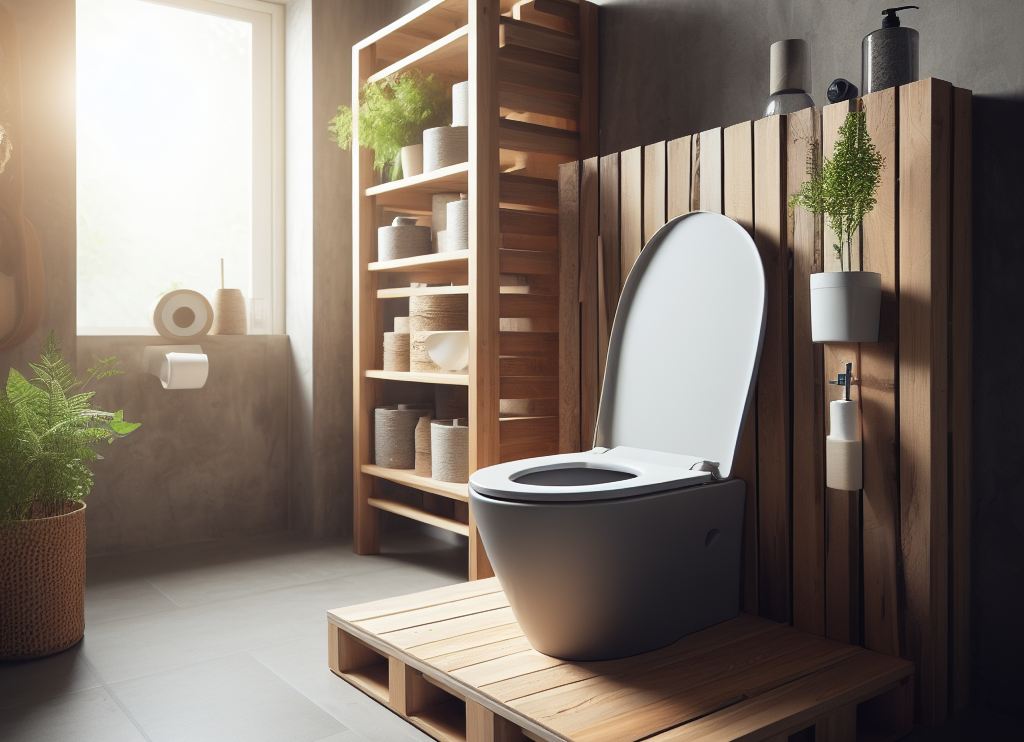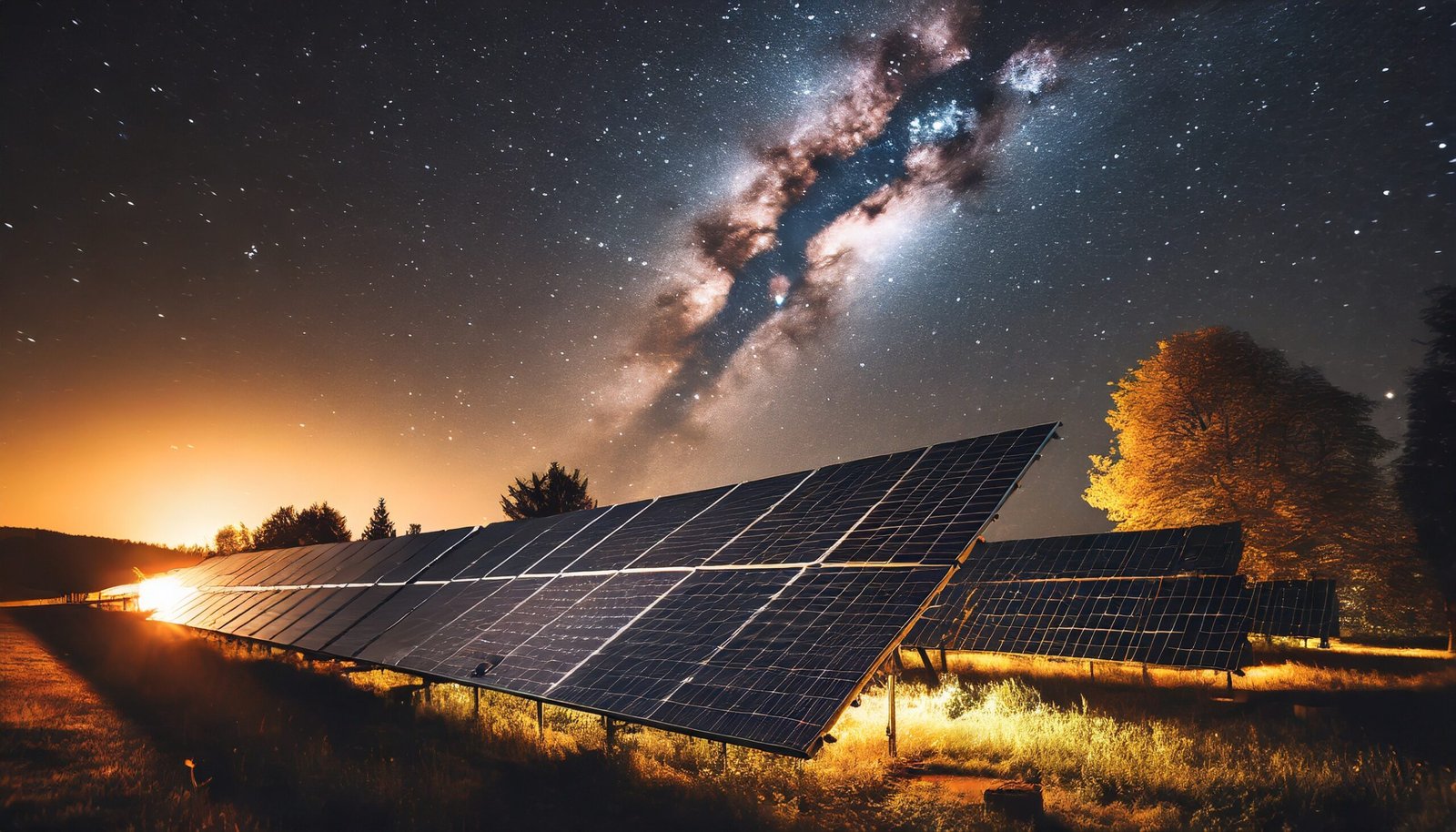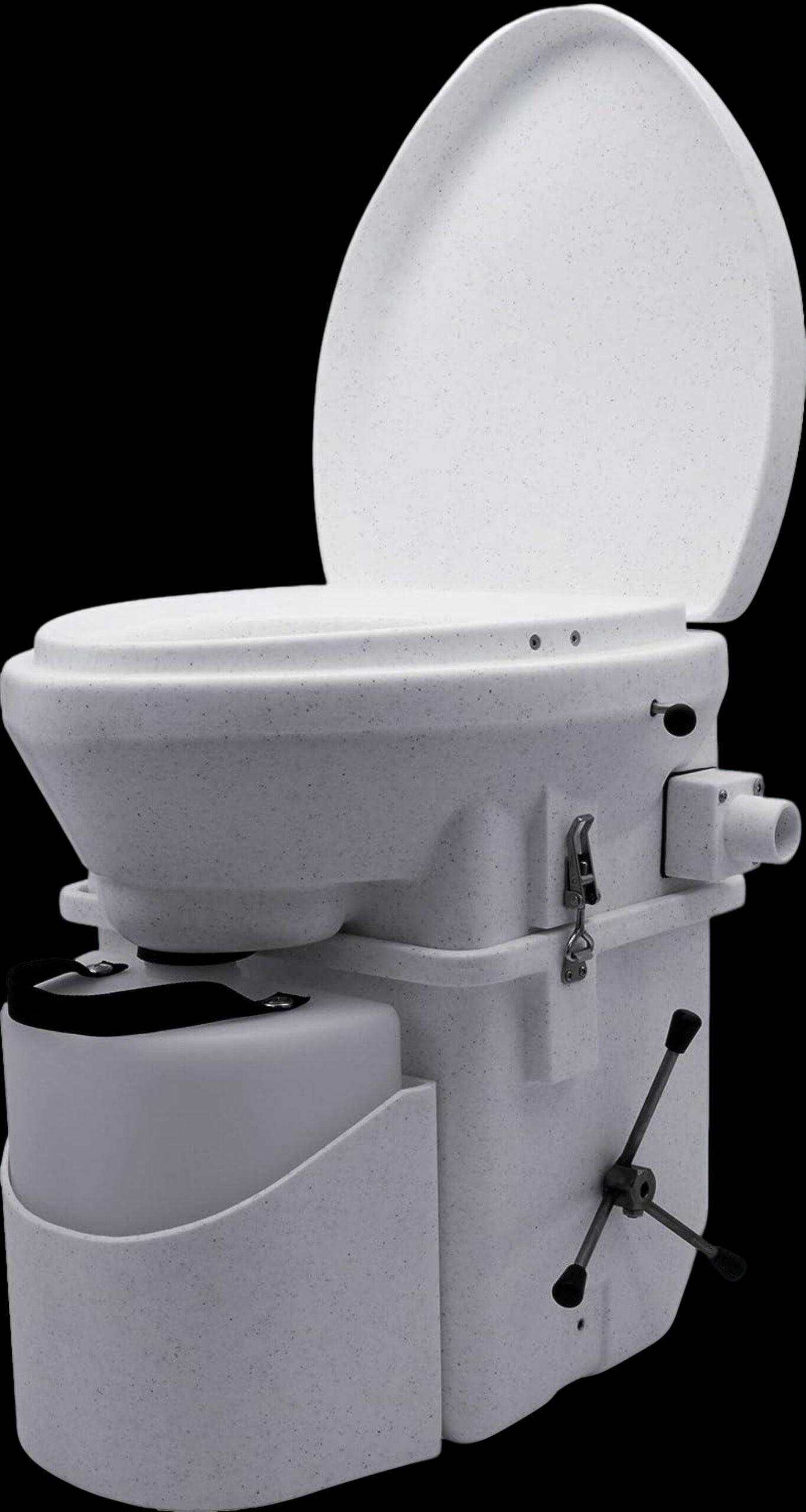Have you ever wondered about the incredible possibilities of energy independence and how it can transform our lives, especially within the serenity of our self-sufficient homes? If so, get prepped, as we will scout the world of solar power, rainwater harvesting systems, composting toilets and the ever-expanding reach of battery energy storage systems. Hold tight this could be a game-changer!
Free Guide
The Sun
Our very own potent powerhouse, showering down an abundance of energy in the form of sunlight every day. Fortunately, this energy source can be harnessed by solar panels—those sleek, shiny devices perched on rooftops and sprawling across fields. However, as predictable as the sun is in its daily rise and set, it occasionally takes a break behind the clouds. So, how do we capture its energy and ensure it’s available even when the sun isn’t shining?
This post contains affiliate links, including Amazon links. As an Amazon Associate, I earn from qualifying purchases. Thank you for supporting BeamBound and helping us continue creating great content—at no extra cost to you!
Battery Energy Storage Systems
Explore Battery Energy Storage Systems, the cornerstone of our renewable energy future. These systems function as efficient reservoirs, capturing surplus energy during peak sunlight hours and safeguarding it for periods of overcast weather and nighttime hours. Picture them as reliable custodians, guaranteeing a steady energy supply even when solar conditions are less favourable.
Lithium-ion batteries play a crucial role in our pursuit of energy independence, despite their small size. These efficient powerhouses store substantial energy, ensuring a constant power supply for homes, businesses, and communities day and night.
Functioning as the core of energy storage systems, these batteries act as guardians, preserving solar-generated energy. During cloudy days or nights, they release stored energy seamlessly, acting like a reserve of sunlight.
Think of them as reliable sources of light, versatile enough to power single light bulbs or entire households. They contribute to the comfort of our evenings, keep our devices charged, and ensure uninterrupted daily life.
Beyond functionality, these batteries symbolize resilience, adaptability, and innovation. They empower us to control our energy usage, fostering self-sufficiency and a sustainable future.
In the quiet of the night, lithium-ion batteries continue working, keeping our homes vibrant. Their significance extends beyond the technical realm – they work almost silently helping us towards self-reliance and energy independence. With lithium-ion batteries driving our energy storage systems, a sustainable and self-reliant future is within reach.
Everyday Miracles: Solar and Battery Magic in Action
Home Sweet Home: Imagine waking up to a sunny morning, knowing that your home, your self-efficient sanctuary, is powered by sunlight. With residential solar panels and battery energy storage, you can enjoy a day of unlimited power. When night falls, the stored energy keeps your home cosy, your devices charged, and a self-satisfaction that you are the one in control of the resources required to power your family’s home.
Unify with Nature: Weather-Informed Energy Management
In the pursuit of a sustainable and self-sufficient energy lifestyle, a key aspect is understanding and responding to specialist weather equipment (the weather forecast) and by attuning ourselves to the natural rhythms of the environment, we can make informed decisions on when to harness the full power of energy-intensive systems, when to conserve energy, and when to liberate stored energy strategically.
Weather Awareness
Monitoring weather conditions becomes a guiding compass for our energy choices. Days of abundant sunshine signal an opportune moment to engage power-hungry systems, maximizing our reliance on solar energy. Conversely, during overcast or rainy days, a prudent approach involves minimizing energy-intensive activities and conserving resources.
Optimizing Power Usage
Strategic utilization of power-hungry appliances and systems aligns with weather patterns. For instance, on sun-drenched days, consider running high-energy devices, such as air conditioning or electric heaters, to capitalize on the surplus energy generated. Conversely, during periods of reduced sunlight, prioritizing energy-efficient appliances and minimizing unnecessary power consumption aids in sustainability efforts.
Smart Energy Conservation
Recognizing when to conserve energy is equally vital. During peak energy demand hours or when external conditions limit energy generation, adopting energy-saving practices ensures responsible usage. Simple adjustments, like turning off non-essential lights and appliances, contribute significantly to a more sustainable energy footprint.
Strategic Use of Stored Energy
Battery storage systems emerge as invaluable assets in this energy management solution. When weather conditions are optimal for energy generation, excess power can be stored for later use. This stored energy acts as a reserve during periods of low solar output, offering the flexibility to power homes even when external conditions are less favourable.
In essence, the key lies in harmonizing our energy consumption with the ebb and flow of nature. By comprehending weather patterns, optimizing power usage, conserving energy when necessary, and strategically employing stored energy, we pave the way for a seamless integration of sustainable practices into our daily lives. This synergy not only enhances our energy independence but also contributes to a more environmentally aware and resilient future.
Tailoring Power Solutions with Expandable Battery Capacity
In the world of renewable energy, the adaptability of battery energy storage systems extends beyond efficiency—it’s about scalability too. One standout feature is the expandable nature of battery capacity, offering users a personalized and adjustable solution for diverse power requirements.
Understanding Capacity
Battery capacity, measured in kilowatt-hours (kWh), signifies the amount of energy a battery can store. Modern lithium-ion-based energy storage systems are designed to facilitate easy capacity expansion. This means users can increase the number of batteries to boost overall energy storage.
Customizing Power Needs
Expanding battery capacity is a straightforward method to tailor the system to specific power needs. Whether it’s extending backup power during low solar output or high demand periods, additional batteries seamlessly integrate into the existing setup.
Scalability Advantages
The scalability of battery energy storage systems brings multiple benefits. Starting with a basic capacity, users can incrementally expand as energy needs evolve or technology advances. This adaptability ensures the energy storage solution aligns with current and future requirements.
Enhanced Energy Management
Expanding battery capacity also improves advanced energy management. Users can optimize energy usage by storing surplus energy during abundance and using it during high-demand or low-renewable energy periods. This level of control contributes to enhanced efficiency and cost savings.
Considerations for Expansion
Before expanding capacity, consider factors like compatibility, available physical space, and overall energy requirements. Consulting with renewable energy professionals can offer insights into the optimal expansion strategy.
In summary, the expandable nature of battery energy storage systems showcases their versatility. This feature allows users to scale their energy storage solutions based on evolving needs, making them a dynamic and future-ready component of a sustainable energy ecosystem.
Our Future: A Sunnier Tomorrow Beckons
As we look ahead, the future of solar power and battery energy storage systems is incredibly promising. Researchers and innovators are constantly pushing the boundaries, developing more efficient solar panels and advanced battery technologies. The goal? To make clean, renewable energy accessible to every corner of the globe, ensuring that no one is left in the dark.
Benefits of Rainwater Harvesting

Rainwater harvesting is a sustainable and eco-friendly practice that allows homeowners to collect and utilize rainwater for various household needs. By implementing a well-designed rainwater harvesting system, you can significantly reduce your reliance on conventional water sources and even eliminate water bills altogether.
Cost Savings
Rainwater harvesting can lead to substantial cost savings by reducing or eliminating the need for municipal water supply. This is particularly advantageous for homeowners looking to cut down on monthly water bills. Depending on your place of residence in the world it will of course be the difference between a vast amount of rainfall spread over time (UK) to somewhere that it might fall less often, but these can be the places where, when it rains it pours!
Environmentally Friendly
Utilizing rainwater is an eco-conscious choice, as it reduces the strain on local water resources and minimizes the environmental impact associated with water treatment and distribution.
Water Conservation
Rainwater harvesting promotes water conservation by capturing and storing rainwater that would otherwise run off into storm drains. This helps mitigate the risk of water scarcity, especially in regions prone to drought.
Components of a Rainwater Harvesting System
Catchment Area
The catchment area is the surface that collects rainwater. Typically, it includes the roof of your home. Ensure the roofing material is safe and suitable for rainwater harvesting.
Gutters and Downspouts
Gutters and downspouts are perfectly set up to channel rainwater from the roof to the storage system. Regular maintenance is essential to prevent debris accumulation and ensure efficient water flow.
Leaf Filters and First Flush Diverters
Install leaf filters to prevent debris from entering the storage tank. First flush diverters help remove the initial, most contaminated rainwater, improving water quality.
Storage Tanks
The storage tank holds the collected rainwater. Tanks can be above-ground or underground and are available in various materials, such as plastic, concrete, or metal. These can range in size depending on your water needs.
Filtration System
A robust filtration system is a crucial component of any rainwater harvesting setup, playing a pivotal role in ensuring that the collected rainwater is of the highest quality. This system is designed to eliminate impurities and contaminants that may have been picked up during the journey from the sky to your storage tank.
Mesh Screens
The first line of defence in the filtration process, mesh screens intercept larger debris such as leaves, twigs, and insects. These screens act as the initial barrier, preventing physical contaminants from entering the storage tank and compromising the water quality.
Sediment Filters
As rainwater flows over surfaces and through gutters, it can pick up fine sediments like silt and dirt. Sediment filters, often positioned along the downspouts or within the storage tank, capture these particles, ensuring that the water remains clear and free from any suspended solids.
Activated Carbon Filters
For an additional layer of purification, activated carbon filters can be integrated into the system. These filters effectively adsorb organic compounds, chemicals, and some types of pollutants, enhancing the overall quality and taste of the harvested rainwater.
UV Treatment
Ultraviolet (UV) treatment can be employed to disinfect the water by neutralizing harmful microorganisms like bacteria and viruses. UV light disrupts their DNA, rendering them incapable of reproduction and making the water safe for various uses.
First Flush Diverters
While not strictly a filter, first-flush diverters deserve mention. They play a critical role in enhancing water quality by diverting the initial runoff, which may contain the most contaminants, away from the storage tank. This simple yet effective mechanism ensures that only the cleanest rainwater is directed into the harvesting system.
Overflow System
An overflow system prevents the tank from overflowing during heavy rain. Excess water can be directed to permeable surfaces or a garden.
Utilizing Rainwater in Your Self-Sufficient Home</strong>
Irrigation
Rainwater is ideal for watering plants, gardens, and lawns. Connect the harvesting system to an irrigation system to automate watering.
Toilet Flushing
Connect the rainwater system to toilets for flushing. This is a significant source of water savings, as toilets typically account for a large portion of household water use.
Laundry
Use rainwater for washing clothes by connecting the system to your laundry machine. This not only conserves water but also reduces the load on your municipality’s water supply.
Composting Toilets

Water Conservation: Composting toilets function without the need for water for flushing, making them a valuable resource in regions facing water scarcity. This not only reduces household water usage but also alleviates the pressure on local water supplies.
No Plumbing Connections: Composting toilets are self-contained units, eliminating the need for extensive plumbing connections. This feature makes them suitable for various settings, including remote cabins, off-grid homes, and sustainable communities.
Odour Control: Advanced composting toilets are equipped with ventilation systems that effectively manage odours. These systems promote the aerobic decomposition of waste, minimizing unpleasant smells commonly associated with traditional septic systems.
Energy Efficiency: Many composting toilets operate with minimal energy consumption. Some models utilize fans or natural convection for ventilation, making them energy-efficient and environmentally friendly.
Benefits of Composting Toilets
Environmental Impact: Composting toilets significantly reduce the environmental impact associated with conventional sewage treatment. By converting waste into compost on-site, these toilets minimize the need for energy-intensive treatment facilities and reduce the release of pollutants into waterways.
Resource Conservation: The elimination of water usage in composting toilets contributes to water conservation, making them an ideal choice for sustainable living. This is particularly beneficial in arid regions or areas facing water shortages.
Nutrient-Rich Compost: The end product of the composting process is a nutrient-rich material that can be used as fertilizer for gardens or landscaping. This closed-loop system transforms waste into a valuable resource for enhancing soil fertility.
Considerations and Maintenance
Proper Installation: Correct installation is crucial for the effective operation of composting toilets. Follow manufacturer guidelines to ensure that the unit is properly set up and ventilated.
Regular Maintenance: Composting toilets require regular maintenance, including monitoring moisture levels, emptying compost bins, and ensuring proper ventilation. Following a maintenance schedule outlined in the user manual is essential for optimal performance.
Composting toilets represent a sustainable and efficient solution for modern sanitation needs. As awareness of environmental issues continues to grow, these toilets offer a practical way for individuals to reduce their ecological footprint while contributing to the creation of nutrient-rich compost. Whether for off-grid living, water conservation, or promoting a greener lifestyle, composting toilets stand as a testament to the possibilities of eco-friendly sanitation practices in the 21st century.
Conclusion: Our Independence Journey
Joining these applications within self-sufficient homes allows us to tap into our subconscious, instinctual DNA to be free and able to have our own back should things get tough. This integration enables us to avoid excessive dependence and work towards our dreams and aspirations for a greener, more sustainable, and self-sufficient future.
If you have any comments or questions about this incredible opportunity we have, feel free to reach out.










